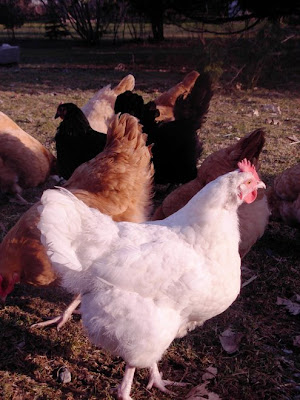
Another brief note from the New York Times, this time about genetic variations--or the lack thereof--in commercially produced chickens. The link to this article is http://www.nytimes.com/2008/11/04/science/04obchicken.html?scp=1&sq=&st=nyt .
A new study shows that commercially produced chickens are less genetically diverse than they were 50 years ago....a troubling development since that means diseases can spread more easily through a larger number of chickens that lack varying means of resistance to these diseases. Rather than natural selection developing varieties that evolve into separate species on the one hand, or the variation under domestication described by Darwin in chapter 1 of "Origin of Species," which as he puts it, leads to a greater variety than what would be found in nature (using the example of his beloved pigeons), this article shows instead a form of domestication that unwittingly leads to uniformity. According to this study, published in the Proceedings of the National Academy of Science, around 50 percent of the ancestral breeds of these chickens have been lost.
However, this study was able to "reverse engineer," and through genetic studies reconstruct the genetic characteristics of the ancestral breeds and identify what is missing from the contemporary chickens. So, on one level an interesting contrast to Darwin's apparent view of evolution leading to a continuously growing level of diversity.
Brad Bauer
No comments:
Post a Comment